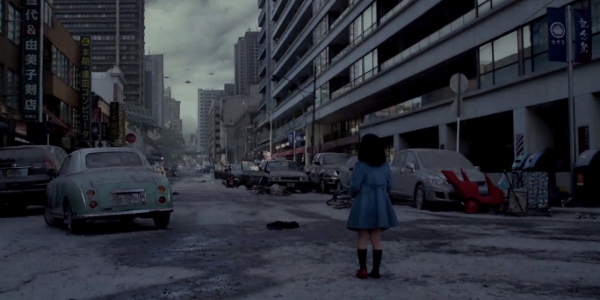The Book Of Life (2014)
October 30, 2014 Leave a comment
 Promising a secret tour of her museum, Mary Beth (Christina Applegate) takes a small group of school children to a hidden chamber where she recounts a story from Mexican lore. Years ago in the town of San Angel, two childhood friends were vying for the affections of a young girl called María (Zoe Saldana). Monolo (Diego Luna), a musician from a family of bullfighters, attempts to win her over with music, while Joaquín (Channing Tatum), the orphaned son of the town’s late hero, uses his physical prowess to impress her. Unbeknownst to them, however, their efforts are being overseen by two of the country’s ruling deities — La Muerte (Kate del Castillo), who reigns in the Land of the Remembered, and Xibalba (Ron Perlman), who watches over the Land of the Forgotten.
Promising a secret tour of her museum, Mary Beth (Christina Applegate) takes a small group of school children to a hidden chamber where she recounts a story from Mexican lore. Years ago in the town of San Angel, two childhood friends were vying for the affections of a young girl called María (Zoe Saldana). Monolo (Diego Luna), a musician from a family of bullfighters, attempts to win her over with music, while Joaquín (Channing Tatum), the orphaned son of the town’s late hero, uses his physical prowess to impress her. Unbeknownst to them, however, their efforts are being overseen by two of the country’s ruling deities — La Muerte (Kate del Castillo), who reigns in the Land of the Remembered, and Xibalba (Ron Perlman), who watches over the Land of the Forgotten.
A macabre Mexican animation produced by the one and only Guillermo del Toro? It’s certainly a tantalising prospect, but sadly one that debut director Jorge Gutierrez sadly — if perhaps unsurprisingly — fails to realise. And indeed, given the expectations that accompany any del Toro’s production, who could have expected him to? It’s not entirely Guiterrez fault, to be fair, with a banal script, bizarre casting choices and a bonkers soundtrack doing little to improve his chances of success. The dialogue is drab, the Mexican accents are inconsistent and every time Monolo picks up his guitar the film grinds to a halt while he launches into a completely incongruous rendition of Radiohead’s Creep.
It was, frankly, never going to work. Not only does the audience have three sets of characters to contend with, but they must first come to terms with a foreign belief system with which most will be completely unfamiliar. Throw in the fact that the visual style changes between one layer of storytelling and the next and you reach a level of narrative complexity that will likely have parents struggling to keep up, never mind their children. Seriously, it’s a story within a story about a world within a world that features characters pretending to be other characters in order to…settle a wager. At one point Monolo — dead, but ‘living’ in the Land of the Remembered — has to journey to the Cave of Souls to ask The Candle Maker (?) to transport him to the Land of the Forgotten so that he might then fight a giant bull and return to San Angel to stop a bandit from stealing a magic medal. I mean, what?
Thankfully, while the animation of the school children might at first seem a little crude, the rest of the film boasts some real visual flair. Styled on traditional wooden toys, the residents of San Angel are well crafted and beautifully animated — the residents of the Land of the Remembered even more so. What’s more, the film has a wonderful energy which means that while you’re not always entirely sure what’s going on it hardly matters, because it’s a joy to watch regardless. Sadly though, for all its exotic splendour, and despite the overwrought madness of the various subplots, The Book Of Life is actually a fairly staid story about essentially stock characters. Much is made of María being a different kind of heroine, a modern and independent woman who refuses to be controlled by the men in her life, but rather than round out her character the film simply sidelines her until a damsel in distress is needed for the final act.
Originally in development at DreamWorks Animation where del Toro has long served as a consultant, The Book Of Life was dropped from the studio’s release schedule over creative differences. Produced instead at Reel FX Creative Studios the filmmakers may have had more creative freedom to realise the film that they intended but at the cost of all the resources and seasoned talent that come with such an experienced backer. Guitterez may be better than Free Birds, the smaller studio’s previous effort, but you have to wonder if maybe DreamWorks Animation canned it for a reason.















